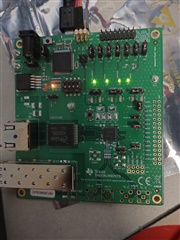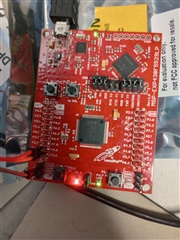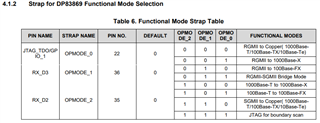Other Parts Discussed in Thread: DP83869, USB-2-MDIO
Hello,
I am having some trouble figuring out how to set registers in the DP83869 by using a launchpad via the external MDIO pins on the eval board.
I had no issues setting registers via the on-board MSP430 using the USB-2-MDIO software. I was able to see a single COM port and a single PHY through that port. I was able to write and read back to confirm successful writes.
Using the launchpad, I was able to flash the MCU (the red and green lights are both lit now). When using the USB-2-MDIO software, the launchpad shows two COM ports. There is the "debug interface" which does not show any PHY addresses. This makes sense to me. There is also the 'application UART' which shows all PHY addresses as available. When trying to set registers, I get a mix of timeout errors and errors which say "Error! Improper length format in extended register read/write." Some write commands go through, but they don't read back as set. I have tried a number of different PHY addresses under the 'application UART' port.


There was some inconsistency in the USB-2-MDIO guide between pictures and instructions about which jumpers should be open/closed on the launchpad. Wondering if I have some of these set incorrectly. I have attached the configuration for both boards.
Thank you.


